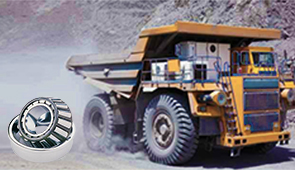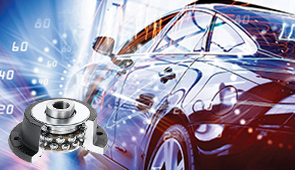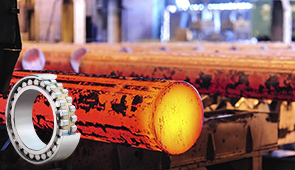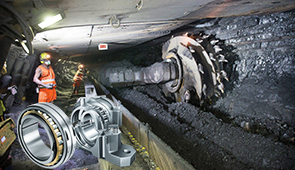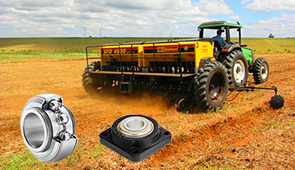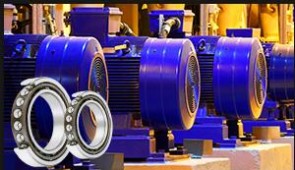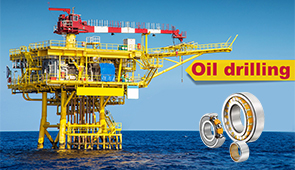Sleeve Bearing vs Ball Bearing: Which Cooling Fan Bearing Type Is Right for You?
When selecting a cooling fan for a critical application, the type of bearing used can significantly influence the fan’s performance, lifespan, and suitability for specific operating conditions. Sleeve bearings and ball bearings are the two most common types found in cooling fans, and each comes with its unique advantages, drawbacks, and ideal use cases. This article aims to provide a comprehensive comparison of these two bearing types, offering readers a detailed understanding of their construction, functionality, and key considerations for selection. By the end, you will have the knowledge needed to determine which bearing type aligns best with your cooling system requirements.
What are the main differences between sleeve bearings and ball bearings?
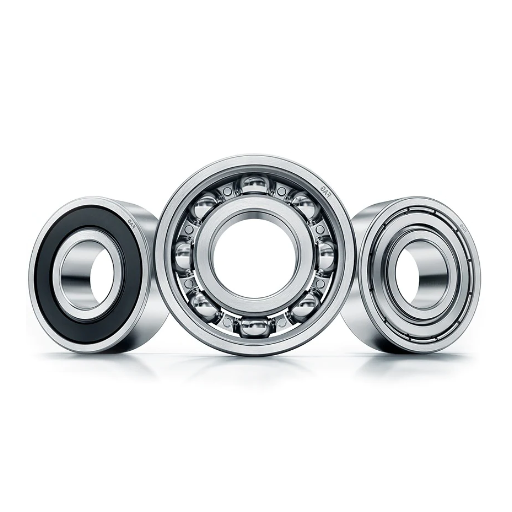
How do sleeve bearings and ball bearings reduce friction?
Both sleeve and ball bearings lessen friction but do so in distinct ways that are unique to their construction. Sleeve bearings, or plain bearings, ease the friction between the shaft and the bearing surface. This is put into action through a sliding motion which is aided by oil or grease which acts as a lubricant and lowers surface contact and abrasion. Wear and tear on the structure is prevented which results in a range of 0.1 to 0.3 for properly lubricated sleeve bearings based on the materials used and lubrication provided.
On the opposite end of the spectrum, friction is lessened by the use of rolling contact in ball bearings. The inner and outer raceways contain a spherical rolling element which is made of steel or ceramic enabling rotational motions to occur with little to no resistance. For rolling action, the contact area is more minimal than it is with sliding structures, therefore, the coefficient of friction is at a much lower rate of 0.001-0.005. In high-speed settings, friction is very sensitive which is why ball bearings are best used in these situations.
Based on the set forth by the operational application which concerns speed, weight tolerance, and accuracy, these two different methods describe each type’s advantage.
What are the lifespan differences between sleeve and ball bearings?
Factors including load, speed, temperature, lubrication, and maintenance affect the operating life of sleeve and ball bearings.
- Sleeve Bearings: These bearings are better suited for steady, low to moderate speeds, gaining much stronger longevity through a constant distribution of load. The use of proper lubrication reduces wear, making these parts last longer. A sleeve bearing can achieve up to 100,000 hours of usage under ideal circumstances, while poor lubrication combined with excessive and uneven loading drastically reduces service life.
- Ball Bearings: In applications where there is little friction, ball bearings provide increased speed usability alongside a relatively long service life. However, under heavy load or shock loading, these bearings do not last as long. When accounting for proper design and lubrication, the average lifespan of a precision ball bearing is rated to be 25,000 to 50,000 operational hours. Despite their longer lifespan, these bearings are negatively impacted by a host of factors including, but not limited to, contamination, misalignment, and overheating.
Both types of bearings have benefits and drawbacks which means the application must be analyzed. At low speeds where reliability is desired, sleeve bearings are preferred, whereas in more dynamic tasks where low friction and high speed are required, ball bearings are better.
How do noise levels compare between sleeve and ball-bearing fans?
The noise levels between sleeve fans and fans employing ball bearings differ fundamentally because of their design and functioning principles. In comparison to ball bearing fans, sleeve fans with copper electrolyte bearings have lower noise levels predominantly because sleeve bearings have lower motion and vibration during startups. However, over prolonged use, their lubrication conditions can worsen which translates to increased operational sound levels. In contrast, ball bearing fans would start off producing higher levels of sound than their sleeve counterparts and lubricant-assisted sleeve fans and this noise profile is likely to remain unchanged for the life of the fan. Moreover, sleeve fans would always operate noisier compared to other types alike under conditions of high speed or high temperature.
- Rotational Speed (RPM): Noise levels will likely rise due to increased friction. In comparison to sleeve bearings which may become noisy, ball bearings are accommodating to higher RPMs with little to no noise emittance.
- Lubrication Properties: In comparison to sleeve bearings, ball bearings are less dependent on lubricant in orthotic devices for consistent noise regulation, unlike their sleeve bearing counterparts, which depend highly on lubricant quality for the maintenance of proper functioning.
- Operational Temperature: Increased temperature leads to faster degradation of the lubricant, which subsequently causes noise increase in sleeve bearings. Ball bearings, on the other hand, remain consistent across a wide array of temperatures due to their strong construction.
The choice between sleeve and ball bearings must account for these factors based on the fan’s intended application and environmental conditions.
Which bearing type is best for cooling fans?
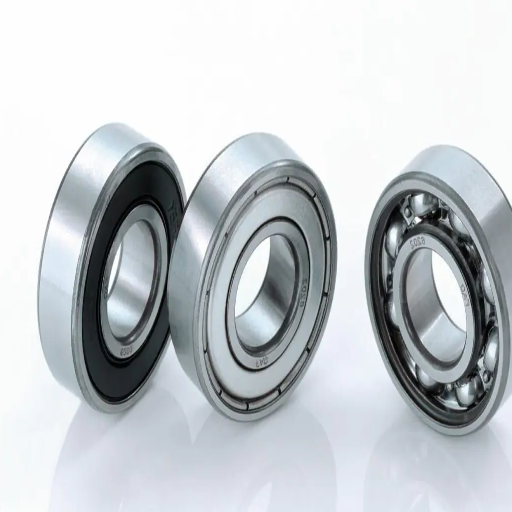
What characteristics make sleeve bearings suitable for cooling fans?
The cooling fans can use sleeve bearings as they are simple to use, inexpensive, and operate quietly. They are the best choice for situations that need low noise, as well as in applications where the fan is placed close to horizontally. Sleeve bearings best function in environments with moderate temperatures and slow speeds.
- Noise Levels: When compared to ball bearings, sleeve bearings are quieter and produce less noise due to their smooth surfaces.
- Cost Efficiency: These bearings are cheaper due to their simple designs as well as being easy to manufacture.
- Orientation Dependency: Sleeve bearings are preferred for horizontal installations since they may experience high wear and tear when fixed vertically or at an angle.
- Temperature Range: Sleeve bearings are best used in applications less than 70ºC (158ºF) since temperatures higher than this range can degrade the quality of lubrication and rust the bearings.
- Rotational Speed: Small to medium fans output moderate RPMs, generally ranging from 1500 to 3000 RPM, so sleeve bearings are best used here.
If these constraints align with the operational environment of the cooling fan, sleeve bearings become an excellent choice to optimize both performance and budget.
Why are ball bearings often preferred in cooling fan applications?
Ball bearings are the kind of choice for cooling fan applications because of their performance in harsh environments. In my opinion, ball bearing’s main advantages are their capability to operate at greater rotational speeds, as well as their durability in upper high extreme temperatures. Specifically:
- Temperature Tolerance: Reliable performance in applications where heat is constantly present is made possible with optimal functioning temperature that exceeds 70°C.
- Rotational Speed: For demanding systems, high efficiency and stability in rotational speed above 3000 RPMs is crucial, hence their wide range of applications.
- Longevity: In terms of assistive technology, reduced friction, and diminished load concentration makes them highly applicable in heavy-duty, high-functioning environments.
These features, in all, allow ball bearings to be used in highly sensitive places where control is paramount regardless of high costs which are amply compensated by consistent performance in extreme mechanical or thermal conditions.
How does fan mounting affect the choice between sleeve and ball bearings?
The installation of the fan determines whether sleeve or ball bearings are to be used for position and operating needs. Ball bearings are preferred for performance vertical and other non-horizontal fan mounting positions, since they are much less responsive to gravity-loaded forces. Additionally, performance and life expectations are high because of the axial and radial load capabilities.
- Degree and Type of Load: Ball bearings can take on upper and lower axial loads, making them favorable for verticals and other fan units without horizontal axial configurations, thus reducing deterioration of the unit.
- Degree and Type of Load: Ball bearings can take on upper and lower axial loads, making them favorable for verticals and other fan units without horizontal axial configurations, thus reducing deterioration of the unit.
- Durability Against Wear: Because of their overpowering designs, ball bearings will stand the test of time over-sleeve bearings when utilized in multi-mount environments. The latter are less productive when not horizontally mounted and are more susceptible to deterioration.
Whether or not the environment is demanding in sleeve mounts at horizontal positions with lightweight conditions then the cost is decreased because of low technology requirements and ohmic noise control mechanisms. Quiet operations and simple constructions of sleeve bearings enable effective low-cost achievement. Ball bearings, however, remain unrivaled in multi-directional units by settings with set and vertical angles.
What are the cost considerations when choosing between sleeve and ball bearings?
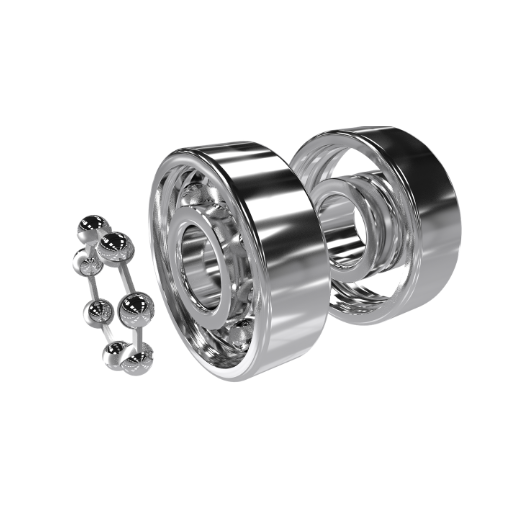
Why do ball-bearing fans typically come at a higher cost?
Ball bearing fans are usually much pricier compared to other fan types due to mechanical complexity as well as unit precision manufacturing needed for their components. Unlike sleeve bearings, ball bearings feature spherical rolling elements that reduce friction and allow for unimpeded rotation in high-applied loads and other orientations. This feature also improves the life of the system by ensuring functionality under more strenuous conditions.
- Load Capacity: Ball bearings are designed to sustain greater amounts of axial and radial loads than sleeve bearings making them appropriate for more demanding tasks.
- Longevity: In many cases, ball bearings demonstrate longer lifespan during operations especially when used in highly heated and vigorously shaken places.
- Versatility: Ball bearings are mounted in horizontal, vertical, and inclined positions and operate without any performance issues.
The more expensive parts such as balls, raceways, and cages all require a significant amount of precision during manufacture in addition to tighter quality control which raises the cost. The increased cost can be justified when critical user requirements are taken into consideration because there is better durability and performance.
Are sleeve bearings more cost-effective for certain applications?
Indeed, for applications with lower speeds, lighter loads, and a simpler operating environment, sleeve bearings are more economical. The elimination of rolling elements in their design simplifies manufacturing which in turn reduces the cost of production.
- Load Capacity: Compared to ball bearings, sleeve bearings are not as efficient in high-speed use. However, they can endure heavy radial loads.
- Operating Speed: Sleeve bearings are generally recommended for low to moderate speeds, as excessive rotational speeds risk generating damaging amounts of heat due to friction.
- Lubrication Requirements: To avoid wear and overheating, these bearings require proper lubrication, and are hence, costly in terms of maintenance.
- Cost Efficiency: Considered as basic components in sleeve bearings with limited performance demand, rolling elements and cages can be eliminated. Doing so makes sleeve bearings more economical when used in basic machinery.
In the end, everything depends on the balance between the simplified construction and the sleeve bearings’ technical requirements.
How do sleeve bearings and ball bearings compare in terms of maintenance?
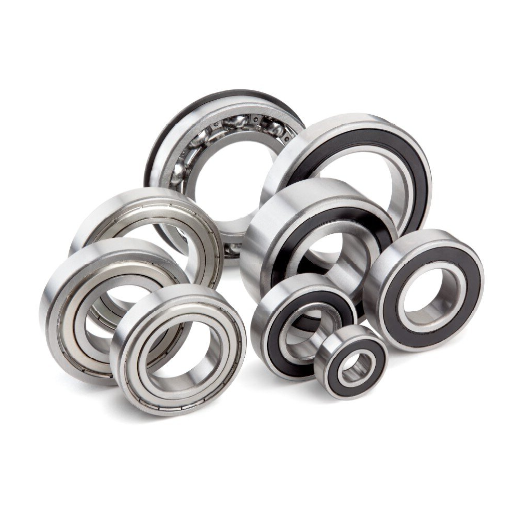
Which bearing type requires less maintenance over time?
From my analysis, ball bearings are reported to need less upkeep over time than sleeve bearings. This is mainly because ball bearings have rolling elements that reduce surface contact and therefore wear and the need for constant lubrication. Here are the major technical points that support this conclusion:
- Lubrication Interval: The use of high-quality seals and greases enables ball bearings to perform efficiently over a longer period. Hence, ball bearings require less frequent relubrication.
- Operating Conditions: Even with seal and lubricated restrictions, ball bearings effectively perform under higher dynamic loads and rotational speeds with minimal wear.
- Wear Mechanism: Unlike sleeve bearings which are susceptible to wear in the absence of lubrication, sleeve bearings continuously lubricate the shaft to minimize contact friction.
- Environmental Impact: With the ability to better seal ball bearings against dust and moisture, maintenance intervals increase, thereby increasing operational longevity.
However, it’s important to note that the specific application environment and operational requirements also influence the overall maintenance needs of either bearing type. For low-speed, light-load applications where periodic lubrication is manageable, sleeve bearings can still be effective and economical.
What are the lubrication needs for sleeve bearings vs ball bearings?
The sleeve and ball bearings differ in their operational modes and subsequent applications. Hence the lubrication requirements for both differ too.
- Sleeve Bearings: These operationally tend to be more demanding in terms of lubrication. They are usually made for hydrodynamic or boundary lubrication systems which require the constant presence of an oil film to alleviate wear and avoid direct contact friction. Depending on the application sleeve bearings are lubricated with either grease or oil. Furthermore, specific conditions such as viscosity grade and temperature range are necessary to maintain proper film thickness. ISO VG 32 or ISO VG 46 oils, for instance, are frequently used in industrial settings due to their reliable performance under various levels of strain.
- Ball Bearings: These have relatively larger lubrication intervals compared to sleeve bearings. This is because these types of bearings operate on a rolling contact mechanism that inherently diminishes friction. A thin protective film to avoid surface abrasion is adequate for these to function. Grease is one of the common lubricants for ball bearings especially when the bearing is sealed or in semi-sealed conditions with low chances of needing maintenance. The grease selected should match the speed, load, and temperature of the working conditions. High-speed ball bearings, for example, prefer NLGI Grade 2 greases which are synthetic and high-temperature resistant.
Whether it is for specific failure prevention or operational optimization, lubrication should always be adequate, as optimal lubrication is critical in both cases. The correct type of lubricant to be selected in addition to the maintenance intervals should match the specifics of the application, like load, speed, temperature, and even environmental conditions.
What applications are best suited for sleeve bearings vs ball bearings?
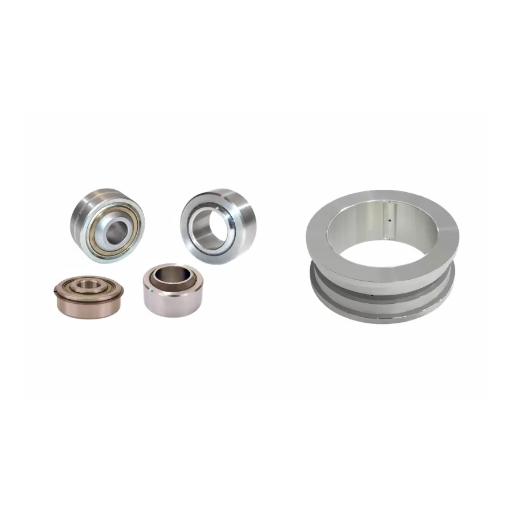
When are sleeve bearings the preferred choice for cooling fans?
In situations where low cost, silence, and reasonable working conditions are paramount, sleeve bearings are the most popular option for cooling fans. They are appropriate for cases in which the fan works at low or moderate speeds and operates at a fairly constant ambient temperature. They are most suitable for fans that are expected to operate at a low-duty cycle or have low loads along with vibration levels.
- Speed: Can operate at low to moderate speeds (generally under 3000 RPM).
- Operating Temperature Range: Normally effective within a moderate range of -10 C to 70 C. Lubrication can be lost if excessive heat is generated.
- Load Capacity: Most appropriate for light to moderate loads. Excess thrust or radial loads will increase component wear.
- Longevity: Best suited for installations where the cost-effective solution is sought and the lifetime of the device is shorter or intermittently used instead.
- Environmental Factors: They work well in clean environments; dust and other alien materials will increase wearing unless sealed enclosures are used.
They are best applied in budget-sensitive designs without losing performance in the set controlled factors, which in this case are temperature and duty cycle.
What types of applications require ball bearings in cooling fans?
Incorporated into computer cooling fans usually used in data center servers or heavy-duty industrial machines, there are applications of ball bearings. Along with operating under harsh conditions, fans with built-in ball bearings are guaranteed to be stable, efficient, and durable.
In comparison to sleeve bearings, ball bearings are better in terms of speed, load, and lifespan. This results in their greater preference for high speed, high load, and longer lifespan operations. Looking at the data from a broader point of view, the following list substantiates their use:
- Speed: Performance-focused systems benefit from high airflow that surpasses 3000 RPM.
- Load Bearing Capacity: Ball bearings have higher axial and radial load toleration which makes them ideal for high mechanical stress systems.
- Longevity: Servicing intervals are greatly reduced as usage in continuous duty applications is feasible.
- Operating Temperature Range: Most applications with varying thermal conditions work well from -20°c to 100°c.
- Environmental Factors: The use of seals paired with ball bearings makes them suitable for industrial use and outdoor installations, making them more resilient to dust and moisture.
Because of these advantages, the use of ball bearings is evident in electronics with high operational speed and industrial machines that are dependable and precise.
Frequently Asked Questions (FAQs)
Q: What are the main types of bearings used in cooling fans?
A: The two main types of bearings used in cooling fans are ball bearings and sleeve bearings, also known as plain bearings. Ball bearings use metal balls to reduce friction, while sleeve bearings operate with a cylindrical sleeve around the shaft.
Q: What are the key differences between ball bearing and sleeve bearing fans?
A: Ball-bearing fans typically offer longer lifespans, higher speed capabilities, and better performance in various orientations. Sleeve-bearing fans are generally quieter, less expensive, and require less maintenance. The choice depends on specific application requirements and environmental conditions.
Q: In which applications do ball bearings excel?
A: Ball bearings excel in applications that require high-speed operation, frequent start-stops, operation in various orientations, and environments with higher temperatures or vibrations. They are ideal for industrial cooling solutions, server rooms, and other demanding environments.
Q: What are the advantages of sleeve-bearing fans?
A: Sleeve bearings offer quieter operation, lower cost, and simpler design with fewer moving parts. They are suitable for applications where the fan operates continuously in a horizontal position and environments with moderate temperatures and minimal vibration.
Q: How do I choose the right bearing for my cooling fan?
A: When choosing a bearing for your cooling fan, consider factors such as the fan’s orientation, operating speed, expected lifespan, noise requirements, and environmental conditions like temperature and vibration. Match these requirements with the characteristics that make each bearing type suitable for specific applications.
Q: Do ball bearings and sleeve bearings require different maintenance?
A: Yes, they have different maintenance needs. Sleeve bearings typically require less maintenance as they have fewer moving parts. However, they may need periodic lubrication. Ball bearings generally need less frequent lubrication but may require occasional cleaning or replacement of the balls.
Q: Can ball bearings and sleeve bearings be used in all fan orientations?
A: Ball bearings can be mounted and operated in any orientation without affecting performance. Sleeve bearings, however, perform best when the fan is mounted horizontally. Vertical or angled mounting can reduce the lifespan of sleeve bearing fans due to increased wear on the shaft and the bearing housing.
Q: Which bearing type is better for high-speed applications?
A: Ball bearings are generally better for high-speed applications. They can handle higher RPMs and provide better stability at high speeds. Sleeve bearings may have limitations in high-speed operations due to potential issues with lubrication and wear.
Q: Are there any noise differences between ball and sleeve bearing fans?
A: Yes, there are noise differences. Sleeve-bearing fans are typically quieter during operation due to their simpler design and fewer moving parts. Ball-bearing fans may produce slightly more noise, especially as they age, but the difference is often minimal in well-designed fans.
UCTH213-40J-300 with Setscrew(inch)
CNSORDERNO: Normal-duty(2)
TOGN: UCTH213-40J-300
SDI: B-R1/8
SD: 2 1/2
UCTH212-39J-300 with Setscrew(inch)
CNSORDERNO: Normal-duty(2)
TOGN: UCTH212-39J-300
SDI: B-R1/8
SD: 2 7/16
UCTH212-38J-300 with Setscrew(inch)
CNSORDERNO: Normal-duty(2)
TOGN: UCTH212-38J-300
SDI: B-R1/8
SD: 2 3/8
UCTH212-36J-300 with Setscrew(inch)
CNSORDERNO: Normal-duty(2)
TOGN: UCTH212-36J-300
SDI: B-R1/8
SD: 2 1/4
UCTH211-35J-300 with Setscrew(inch)
CNSORDERNO: Normal-duty(2)
TOGN: UCTH211-35J-300
SDI: B-R1/8
SD: 2 3/16
UCTH211-34J-300 with Setscrew(inch)
CNSORDERNO: Normal-duty(2)
TOGN: UCTH211-34J-300
SDI: B-R1/8
SD: 2 1/8









